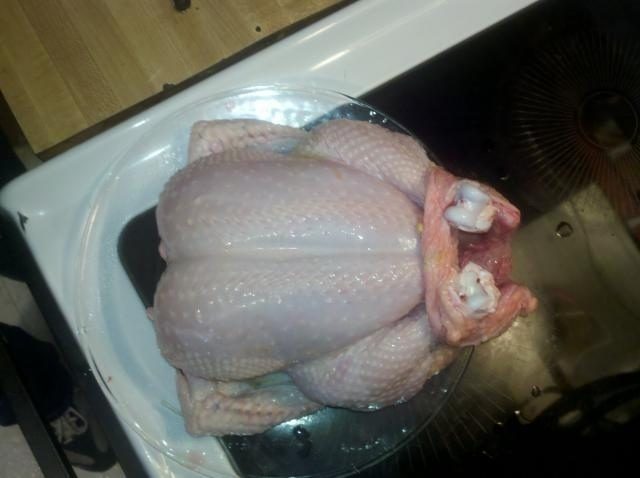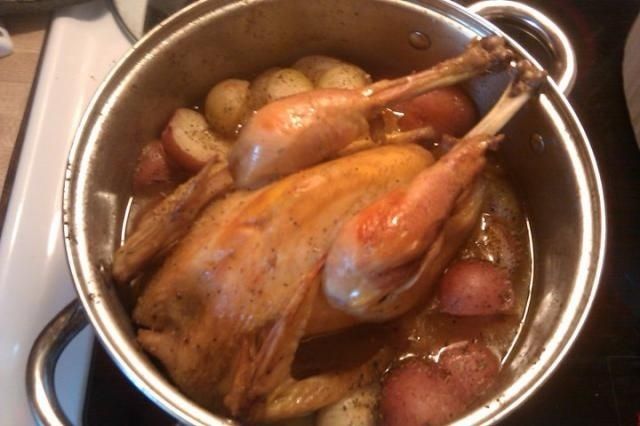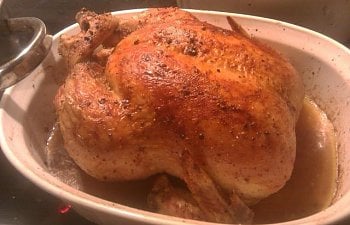Many of us are used to the uniformity of whole chickens at the grocery store. When choosing to process chickens at home, the differences between the size and type of chickens vary greatly. Bantam chickens can be used for meat, but are obviously smaller. "Hatchery" birds that are "dual purpose" breeds often don't compare to the same breed that is raised and selected by a breeder for carcass characteristics. Older birds often are bigger, but still will look much different than the same weight of a store chicken. Below are some of the chickens I've personally processed.
Cornish Cross - these are birds I personally raised and processed between 7 and 8 weeks of age:
A 15 week old SLW rooster that got too mean, too fast. You can see how much narrower the breast meat is, but the legs are longer than the Cornish Cross.

Same bird, cooked:

A bowl of bantam/silkie cross skinned chickens. You can see the presence of the darker colored meat/bones/tendons caused by the silkie characteristics. These were used for stock and the meat shredded.

A seven month old SLW rooster. You can see how much bigger his drumsticks are. The breast meat isn't as pronounced as the Cornish Cross, but it still is substantial

Back to How To Raise & Process Chickens for Meat - Tips, Information, & Pictures
Cornish Cross - these are birds I personally raised and processed between 7 and 8 weeks of age:
A dressed bird that weighed about 5lbs total. You can see the BIG breast meat, but the legs are smaller - similar to a store chicken

One of my cooked Cornish Cross - again, big breasts, and standard sized legs

"Dual Purpose" Breeds - these are chickens I raised or picked up for meat purposes.
One of my cooked Cornish Cross - again, big breasts, and standard sized legs

A 15 week old SLW rooster that got too mean, too fast. You can see how much narrower the breast meat is, but the legs are longer than the Cornish Cross.

Same bird, cooked:

A bowl of bantam/silkie cross skinned chickens. You can see the presence of the darker colored meat/bones/tendons caused by the silkie characteristics. These were used for stock and the meat shredded.

A seven month old SLW rooster. You can see how much bigger his drumsticks are. The breast meat isn't as pronounced as the Cornish Cross, but it still is substantial

Back to How To Raise & Process Chickens for Meat - Tips, Information, & Pictures


